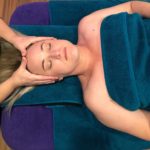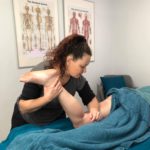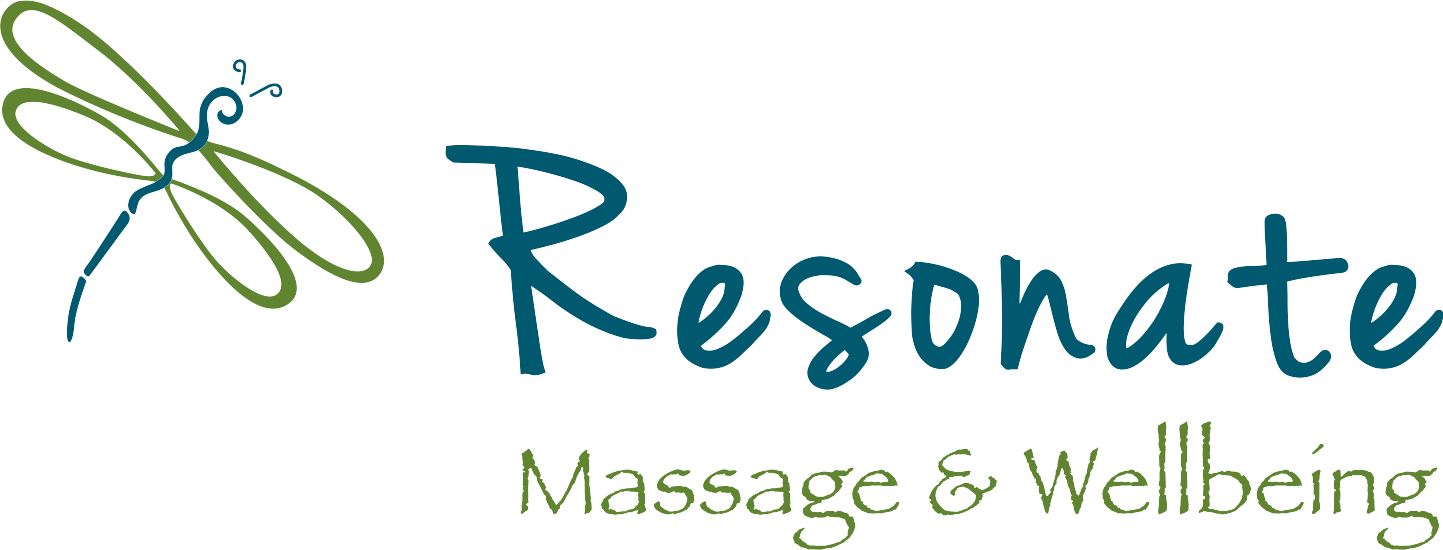Resonate Massage & Wellbeing offers Traditional Swedish Massage (relaxation) and Remedial Therapies. Techniques such as Deep Tissue Massage, Myofascial Release, Trigger Point therapy, Cross Fibre Frictions, Mobilisations and more are used to work on muscles, connective tissues and joints. The techniques may be light or firm, depending on what the issue requires, and more importantly, always working within your pain threshold and preferred level of pressure.
 Relaxation Massage- (Therapeutic/Swedish)
Relaxation Massage- (Therapeutic/Swedish)
A gentle way to calm your mind and relax your muscles. Delight in Hot Towels, Scented Oils, Eye Pillow, Dim Lighting, Tranquil Tunes and Lemongrass Foot Balm. This style of massage is used to help reduce the stress of everyday life. Typically, some kneading and medium (or tailored) pressure is applied with open flat palms, creating long, soothing strokes in the direction of blood returning to the heart. A 30 minute booking offers a choice of either Upper Body only (Back/Shoulders/Arms/Neck/Scalp) or Lower Body only (Legs/Feet). A 60 minute booking includes all of the above, plus an abdominal massage offered as an option (only if you wish to include it).
 Remedial Massage-
Remedial Massage-
Manual soft tissue therapy whereby specialised techniques are used with varying degrees of appropriate pressure applied, to relieve muscle tension & discomfort, reduce stress & anxiety, improve mobility & flexibility, correct muscular imbalances, help prevent injury, and effectively eliminate chronic and acute pain. Remedial massage aims to treat the cause of a disorder, not just the symptoms. The area where the pain is being felt may not always be where the problem sits. As part of the assessment the therapist may perform some tests to help ascertain where the dysfunction/restriction lies. The aim of the treatment is to restore function, ease pain and provide a feeling of wellbeing. You don’t have to be an athlete or sports person to receive Remedial Massage, any ‘body’ can benefit from it.
Trigger Point Therapy-
This is a remedial technique whereby a press, hold and release method is used to focus on tiny ‘knots’ that have formed in the muscle. The therapist may use their thumb, elbow or a specialised tool to apply the pressure. A Trigger Point is a hyper irritable/sensitive spot in the fascia surrounding skeletal muscle, or a palpable nodule in taut bands of muscle fibres. Pain caused by trigger points can be local, or can radiate and refer to broader areas of the body. Trigger points cause part of the muscle fibre to contract into a small, thickened area, and a number of these contractures in the same area can be felt as a ‘knot’.
Causes: Impact to the muscle, poor posture or body mechanics, dehydration, repetitive use, over use, over-stretching, or as a result of injury.
Deep Tissue Massage-
Specific techniques are used to focus on the deeper layers of muscle and surrounding connective tissue, to release muscle tension and break up scar tissue and/or adhesions (adhesions can inhibit blood flow to the affected area, restrict movement and cause discomfort). Following along or across the grain of muscles, tendons or fascia with slow, deep, finger, knuckle, forearm or elbow pressure. Working across the muscle can help re-align tissue fibres and restore function. The therapist will go slower as they work into the deeper layers of tissue.
Myofascial Release- (MFR)
MFR focuses on treating pain and restriction of movement caused by fascial strain. Pain can be from muscle that is bound down by tight fascia, or can be as a result of the connective tissue itself. Fascia is a three-dimensional connective tissue web that wraps and surrounds all the muscles, joints, organs and nerves within the body. Fascia moves and changes according to the body’s demands. When inflamed it can thicken and cause pain, it can tighten, stick together & cause restrictions, and can pull the body out of alignment. To restore motion, pressure and stretching is applied to the connective tissue to loosen the fascia so other structures can move more freely. Due to the continuity of fascia, tension in one area of the body can affect the entire fascial system, restriction/discomfort can be felt in parts of the body not associated with the initial problem.
For Example – An injury in the lower back may develop over time into headaches, neck pain, upper back pain or feelings of tightness in areas away from the original site of injury.
Myofascial Cupping-
This technique involves the gliding of negatively pressurised cups over the body. The vacuum acts to gently lift the skin and underlying tissue to break up cross linkages between the tissue layers that can cause restriction of movement. Cream is applied to reduce friction and assist the glide. Unlike all other massage techniques that use compression, Myofascial Cupping lifts and separates the tissue. The aim is to assist the body in maintaining range of motion, eliminate trigger points and encourage hydration of the tissue to prevent cross linkages being formed. Marking the skin is NOT part of the desired treatment outcome, however it is not uncommon to have residual marks on the skins surface. Any marks will clear within a few days and there is usually no pain or soreness present.
At Resonate Massage & Wellbeing Cupping is used as a complimentary technique during a remedial session rather than a stand-alone treatment.
Myofascial glide cupping is not the same as Traditional Chinese cupping. Traditional Chinese cupping is an ancient Chinese therapy in which a cup is applied to the skin and the pressure in the cup is reduced by heat or suction in order to draw and hold skin & superficial soft tissues inside the cup. The cup is applied to parts of the body that have been affected by pain and is based on the meridian theory of the body. It is believed to remove stagnation in the body and open the meridian so Qi can flow freely, to help rejuvenate organs that are not functioning at their best.

